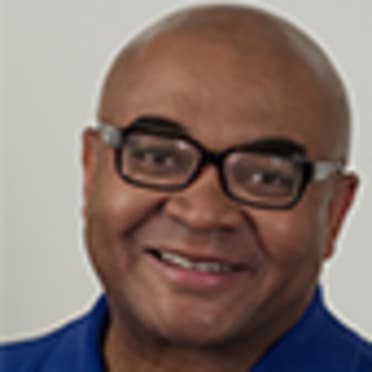Inbox: How important is catcher's bat for Rox?
Beat reporter Thomas Harding answers questions from fans
SCOTTSDALE, Ariz. -- What’s the importance of a catcher’s bat? Let’s go to this week’s Rockies Inbox.
Last season, Rockies catchers tied for last in homers with nine and were 23rd in RBIs with 70. However, their combined .677 OPS -- ranked 22nd in the Majors -- was ahead of the Rays (.646, tied for 23rd) and not far behind the Astros (18th, .707) and the Cardinals (19th, .706), all of whom made the postseason.
In 2018, with mostly Tony Wolters and Chris Iannetta, Rockies catchers had a lower OPS -- .670, which was 18th in the Majors, ahead of postseason clubs like the Brewers, the Astros, the A's and the World Series champion Red Sox (last, at .547).
Now, catchers can help pitchers, but only so much. Rockies starters led the National League in innings pitched in 2018, and mostly the same guys (throwing to the same catchers) pitched poorly in ‘19. But that’s a pitching problem, not a reason to abandon defense-first catching.
Wolters is joined by Elias Díaz, 29, Drew Butera, 36 -- both on Minor League contracts -- as well as rookie Dom Nuñez, but expect the Rockies to seek upgrades.
In 2017, the Rockies began with Wolters and Dustin Garneau, picked up veteran Ryan Hanigan late in Spring Training and obtained Jonathan Lucroy from the Rangers at the Trade Deadline. Lucroy brought offense, but his key purpose was the care of a rotation in its first postseason race.
Teams are limited to 13 pitchers. I suspect the Rockies will rotate not only the identity of the 26th player but his skill set.
For example, Nuñez, outfielder Yonathan Daza and corner prospect Tyler Nevin have skills that coud be useful at the Major League level, and can be optioned to Triple-A Albuquerque for regular playing time.
Ubaldo Jiménez, whose 2010 was the most dominant season by a pitcher in Rockies history, makes for a great camp story. Can he be productive after two seasons away from the game? The Minor League contract means no payroll risk. Possibilities are many: break camp as a starter or long reliever, or begin the season in Albuquerque and push for whatever Rockies opening materializes.
Beyond Jiménez, the 26th roster spot could mean opportunity for Chris Owings -- once a regular and a super-utility man with the D-backs. There’s also lefty Tim Collins, whose high-strikeout work was derailed by Tommy John surgeries in 2015 and '16. He made just nine appearances with the Cubs (3.12 ERA) last season, but fanned 11.6 per nine innings at Triple-A with the Cubs and Reds.
The frustration is fair, given the discord heading into Spring Training.
Let’s not pretend not trading or signing Major League talent was a grand plan. Big contracts with less-than-ideal production have the Rockies punching above their market size payroll-wise, and they’ve been unable to trade for the relief that can allow them to add.
That said, three situations fascinate me:
- Recent articles on Kyle Freeland and new co-pitching coordinator Steve Merriman will be part of a theme this spring: Can the Rockies adjust and coach their way out of last year’s pitching problems?
- Teams in markets large and small save payroll by developing their own stars. Behind Nolan Arenado, Trevor Story and right fielder Charlie Blackmon, can David Dahl (an All-Star in ’19), Ryan McMahon and players with less experience -- Raimel Tapia, Sam Hilliard, Garret Hampson, and Brendan Rodgers, once he is fully back from his shoulder injury possibly in May -- become big producers?
- Big investments in relievers Wade Davis, Bryan Shaw and Jake McGee have yielded mixed results. Can homegrown relievers (Scott Oberg, Carlos Estévez, Jairo Díaz) and hurlers brought in over the last few years (for instance, righty Tyler Kinley, a waiver claim from Miami in December) become low-cost, high-production pitchers?
